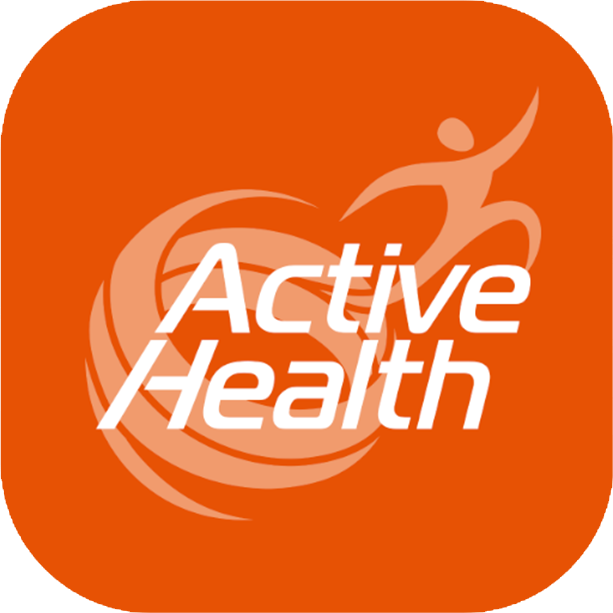Results Interpretation Glossary
Pre-Participation Screening
Medical Clearance Recommendations
| Term | Explanation |
| Medical clearance not necessary (Green) | Moderate to vigorous intensity exercise recommended. |
| Medical clearance not necessary (Orange) | Light to moderate intensity exercise recommended. |
| Medical clearance for moderate intensity exercises not necessary (Orange) | Medical clearance recommended before engaging in vigorous intensity exercise. |
| Medical clearance recommended (Red) | Medical clearance recommended before participating in light to moderate intensity exercise. |
| Medical clearance recommended (Red) | Stop physical activity and consult a doctor before continuing exercise. |
Signs And Symptoms
| Term | Explanation |
| Chest discomfort with exertion (Experience pain and tightness in the chest) | Constricting, squeezing or burning sensations which are common symptoms of reduced blood supply to the heart due to narrowed heart arteries. If unsure, consult your doctor. |
| Unreasonable breathlessness | Shortness of breath felt at rest or during activities where breathlessness is unusual or unexpected. (E.g. Walking up a flight of stairs or for a short distance) This indicates a possible presence of cardiopulmonary disorder, in particular left ventricular dysfunction or chronic obstructive pulmonary disease. |
| Dizziness, fainting or blackouts | Repeated episodes (not an one-off incident) of dizziness and in particular (loss of consciousness) during exercise might result from heart related disorders that prevent the normal rise of cardiac output – the amount of blood pumped by the heart per minute. |
| Ankle swelling | Swelling around the ankle region caused by fluid retention which can be a sign of heart, liver or kidney disease. This is not due to injury, sprained ankle, gout or pregnancy. |
| Unpleasant awareness of forceful rapid or irregular heart rate | Rapid heart rate not due to exercise; irregular heart rate at rest or during physical activity. |
| Burning or cramping in your lower legs when walking short distances | This is not due to long hours of walking and the sensations will normally disappear within 1 to 2 minutes. |
Calculation For Maximum Heart Rate
| Term | Explanation |
| Formula | 220 - Age = Maximum Heart Rate (Note: if you are on blood pressure lowering medication, please do not use the maximum heart rate formula) |
Intensity Levels
| Term | Explanation |
| Subjective measures | • Light intensity: can talk and sing • Moderate intensity: can talk but can't sing • Vigorous intensity: have difficulty talking |
| Training heart rate zone recommendation | • Light intensity: Less than 64% heart rate max • Moderate intensity: 64-76% of heart rate max • Vigorous intensity: 77-95% of heart rate max |
| My recommended heart rate zone calculation | Enter your age in the blue box to activate the calculator. To reset the values, refresh the website. |
| Physical activity and exercise examples | • Light intensity: walking slowly, washing dishes, fishing • Moderate intensity: brisk walking, sweeping, mopping, recreational sports • Vigorous intensity: jogging, running, basketball or football game, carrying heavy loads |
Self-Measurements
Body Composition Analysis
| Term | Explanation |
| Minerals (Bone Mass) | Large quantity of calcified tissue which makes the skeleton |
| Fat Free Mass | The sum of soft lean mass and the mineral mass |
| Skeletal Muscle Mass (SMM) | Mass of muscles that are attached to the skeleton. For individuals with low skeletal muscle mass (SMM), you may consider performing strength training exercises at least 2 times a week. |
| Body Fat Mass | Amount of fat inside our body |
Obesity Analysis
| Term | Explanation |
| Body Mass Index (BMI) | Calculation: Weight (kg) / Height(m)sq • Below 18.4: Underweight • 18.5-22.9: Healthy • 23-27.4: Mildly overweight • Above 27.5: Very overweight, obese |
| Percentage Body Fat (PBF) | Normal range for male is 10% - 22% and female is 20% - 32%. Please refer to table for range specific to age: |
| Calculation for Percentage Body Fat | Fat Mass / Body Weight x 100% |
Segmental Lean Analysis
| Term | Explanation |
| • Right Arm • Left Arm • Trunk Arm • Right Leg • Left Leg |
Segmental analysis allows one to observe the change in lean mass and fat in the various parts of the body. When a person observes weight changes between BIA assessments, the difference is shown from the skeletal muscle mass (SMM) and body fat mass (BFM) results. |
InBody Score
(Note: This score is in reference to assessments taken at Active Health Labs)
| Term | Explanation |
| Range of Points | The total score reflects the evaluation of body composition. A muscular person may score over 100 points. 100 points is the ideal score for the body based on max. muscle mass and min. fat. Score grading: Edema: Consult your doctor immediately • Below 50: Unhealthy • 50 - 59: Fair • 60 - 69: Average • 70 - 79: Good • 80 - 89: Very good • 90 - 100: Excellent |
| Edema | Swelling of part of the body caused by accumulation of excessive fluid due to chronic diseases and body disorders. Normal range: 0.36 - 0.40 |
Visceral Fat
| Term | Explanation |
| Visceral Fat | Body fat that is stored within the abdominal cavity and is therefore stored around a number of important internal organs such as liver, pancreas and intestines. Storing higher amounts of visceral fat is associated with increased risks of a number of health problems including heart disease, Type 2 diabetes and some forms of cancers. |
| Visceral Fat Area | It tells how much of a body fat is surrounding in visceral area, internal organs in the abdominal region. • Normal: ❮100cm sq - Healthy • Over: 100 ~ 150cm sq - Moderate risk for Type 2 Diabetes and Heart Disease • Extremely over: ❯150cm sq - High risk for Type 2 Diabetes and Heart Disease |
Weight Control
| Term | Explanation |
| Target Weight | Ideal weight for your age and weight |
| Fat Control | Amount of kilogram of fat you need to gain or lose to attain an ideal result |
| Muscle Control | Amount in kilogram of muscle you need to gain or lose to attain an ideal result |
Others
| Term | Explanation |
| Body Composition History | To track your progress from the beginning of your Active Health Journey till date. |
| Extracellular Water (ECW) Ratio | Ratio between extracellular water / fluid & total body water/fluid: • 0.36 to 0.40 : Normal range • Below 0.36 : Dehydrated • Above 0.40 Edema |










